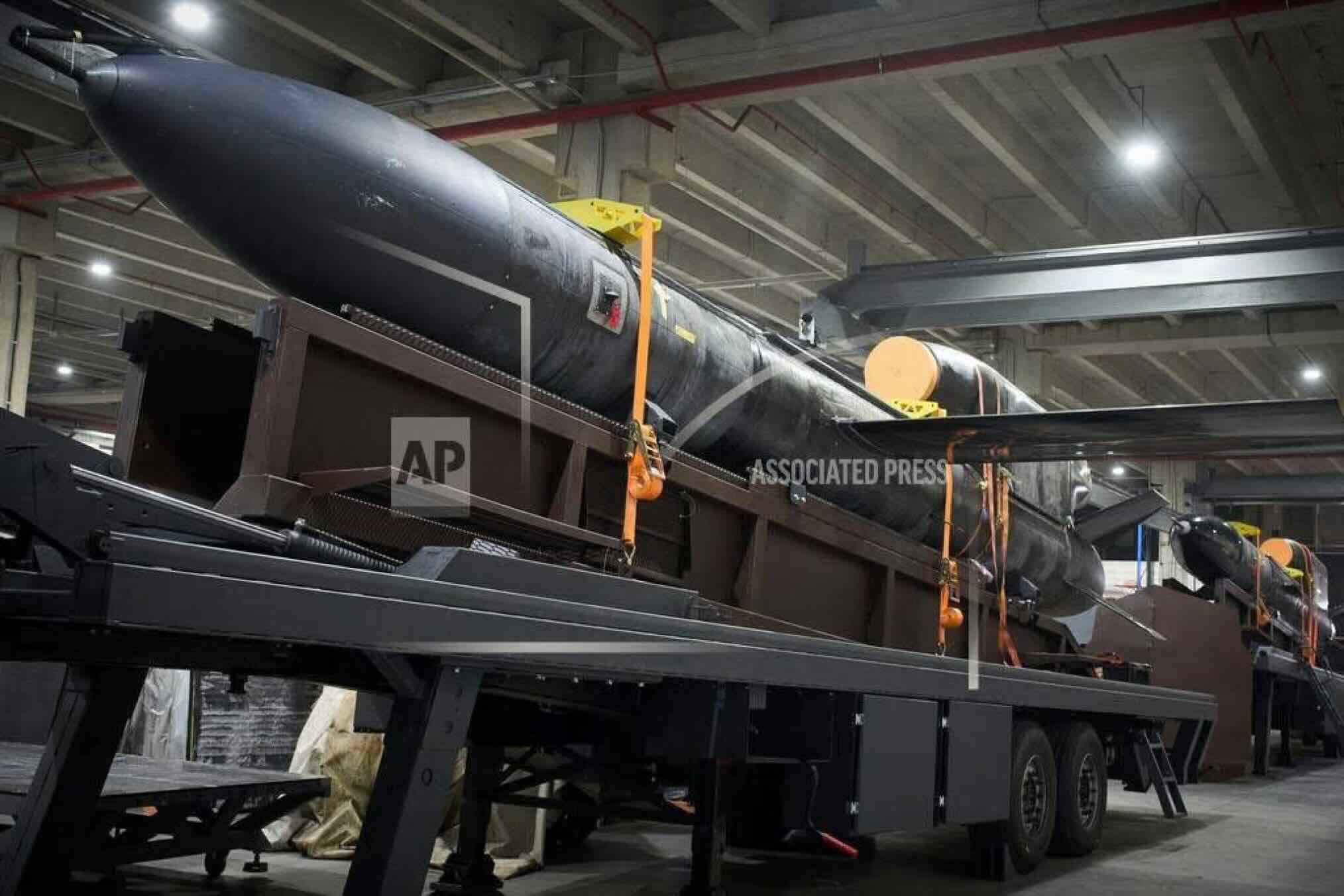


The images were taken on 14 August and released on 17 August by Associated Press photojournalist Efrem Lukatsky. He wrote that Flamingo is in serial production and designed for strikes at distances of more than 3,000km. Official technical data have not yet been issued.
Efrem Lukatsky, head of the AP photo service, published a very interesting teaser: “Ukrainian-made over 3,000 km range Flamingo missiles, which were launched into serial production, are seen in a workshop of one of the country’s leading Fire Point defence company in an… pic.twitter.com/i1qvFDgaW4
— Denis Danilov (@DenisDanilovL) August 17, 2025
Open-source analysts note visual similarities between Flamingo and the FP-5 cruise missile displayed by the UK-registered Milanion Group at the IDEX-2025 defence exhibition in Abu Dhabi. Milanion’s published material lists a maximum range of 3,000km, a nominal launch mass around six tonnes, a fixed wingspan of about six metres, and speeds up to roughly 950km/h. Guidance is described as a combined inertial and satellite system with anti-jam features. These figures are not confirmed for Flamingo but provide a reference point for its class.
In a broadcast interview, aviation expert Valerii Romanenko said the early information on Flamingo was “optimistic”, citing a claimed 3,000km range and a 1,000kg warhead. He argued that, by payload and reach, the missile would sit at the heavy end of current cruise-missile designs. Romanenko also suggested the architecture appears simplified for mass manufacture, with fixed wings and a conventional ground launch, and that the guidance package likely combines an inertial system with satellite correction, with the potential for a terminal seeker. These remarks have not been corroborated by official releases. Espreso
Romanenko compared the headline figures circulating around Flamingo with Western and Russian cruise missiles, noting broadly similar flight speeds to established types such as Russia’s Kh-101 and naval Kalibr, but a larger quoted warhead. He also pointed to claims—drawn from Milanion statements about FP-5 production capacity—of output on the order of dozens per month, and said Ukraine would prioritise scale if Flamingo enters sustained manufacture. No Ukrainian authority has placed a figure on monthly production.
United24 and other outlets that first highlighted Lukatsky’s photographs reported that two airframes were visible on the shop floor, with jigs and access stands consistent with assembly work. Subsequent coverage in specialist media repeated the 3,000km figure and noted that developers have released short video clips purporting to show test firings; these claims cannot be independently verified.
If Flamingo enters service with the parameters suggested by the comparative data, it would extend Ukraine’s domestically produced long-range strike options beyond the land-attack variants of the Neptune family and experimental ballistic systems reported since 2024–2025. The FP-5 reference profile implies a missile intended for deep strikes on fixed infrastructure, where a heavy unitary warhead and resilient mid-course navigation are prioritised over manoeuvre. Whether Flamingo adopts terrain-referenced navigation or other terminal aids is unknown.
Production tempo, guidance resilience against electronic warfare, and integration with targeting data will determine practical effects. Milanion’s brochures emphasise anti-jam satellite navigation and an INS backbone; Romanenko said he expects Flamingo to follow a similar approach, with periodic course updates to correct for drift and wind. Without official technical notes, those assessments remain provisional.
Reports about Ukraine’s wider unmanned and strike ecosystem continue to note the expanding use of long-range drones for oil and energy infrastructure targets, while analysts debate the relative efficiency of heavy cruise missiles versus swarms of smaller systems. Romanenko argued that heavier warheads are more likely to disable industrial plants with fewer hits, whereas piston-engined long-range drones, despite improvements, carry limited payloads and are more exposed to air defences over extended flight times. These points reflect his assessment, not an official doctrine statement.
As of publication, the only hard evidence in the public domain is Lukatsky’s imagery from 14 August indicating that large cruise-missile airframes are in assembly at a Ukrainian facility, and a set of open-source comparisons to Milanion’s FP-5. Confirmation of Flamingo’s final specifications, launch modes and entry-into-service milestones will depend on further disclosures from Ukrainian authorities or the manufacturer.